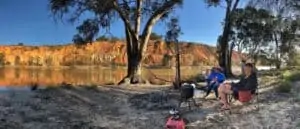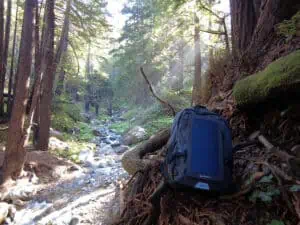Life-Saving Survival Tips and Tricks in the Wilderness
Even the most fearless adventurer can be completely lost if a hike goes awry, leaving them to survive in the wilderness.
If you’re lost in the wilderness, the most important survival tip is not to panic and keep calm to assess the situation.
And as long as you know a few of the basic wilderness survival tips and tricks, such as how to build a shelter, find water, stay warm, and get food, you should be fine until help comes to your aid.
In this survival guide, we’ll discuss some essential tips and tricks that will help you survive in case you’re lost in the wilderness.
Find an Appropriate Site to Camp
You must set up a campsite when you’re lost in the wilderness. Choose a suitable campsite that is high and dry. Avoid low-lying areas such as paths or valleys where the water will flow toward you in case of a flash flood.
Choose a campsite free from dangers such as insect nests, falling rocks, or dead tree branches that may fall on you at night.
You should ideally choose a campsite close to running water, rocky formations, or walls that can shelter you from the elements and dry wood, which you can use to make a shelter and build a fire.
Find Water
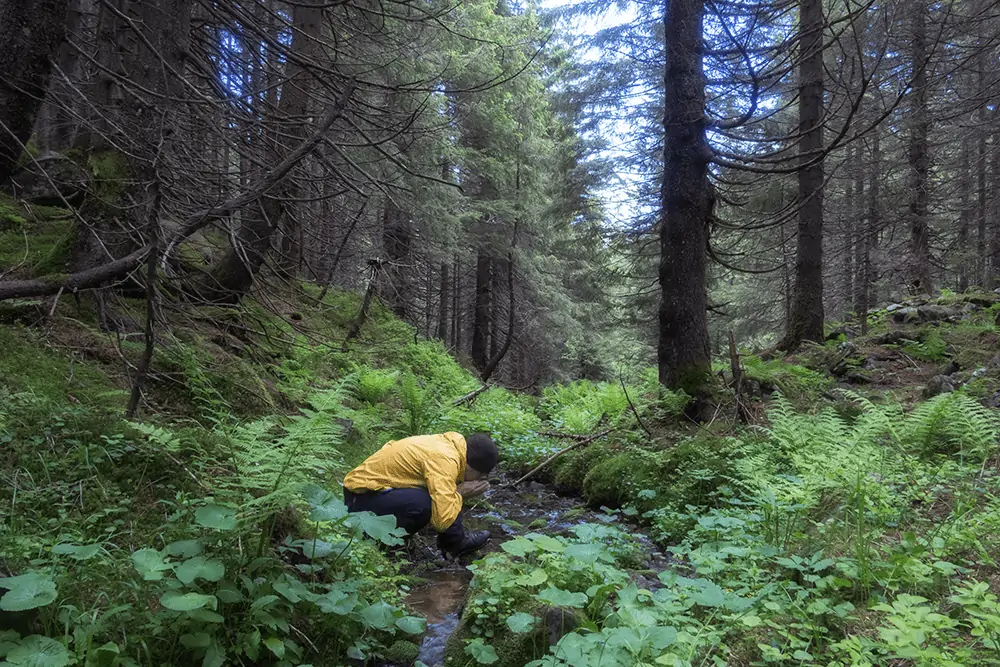
Locate a water body such as a stream, river, pond, or lake, and then build your shelter near it.
Avoid building your shelter on the water’s edge because there is a high risk of wild animals frequenting the waterhole to drink water.
Purify Water
The best sources of clean water you can use without purifying are snow, rain, and dew. Any water you collect from any other natural source must be sterilized, and the easiest way is to boil the water for around 20 minutes.
If you cannot find a stream, river, lake, or pond, dig a hole, which will fill with water during the night. If the water is muddy, use a piece of cloth such as your bandana, handkerchief, or shirt to strain the water.
If you cannot find any other water, use your bandana or shirt to collect dew in the mornings. Or, press the cloth into the ground. You can wring the water soaked up by the cloth into your mouth.
Trail your shirt through the underbrush, which will collect water from the leaves you can wring into your mouth.
Build a Shelter
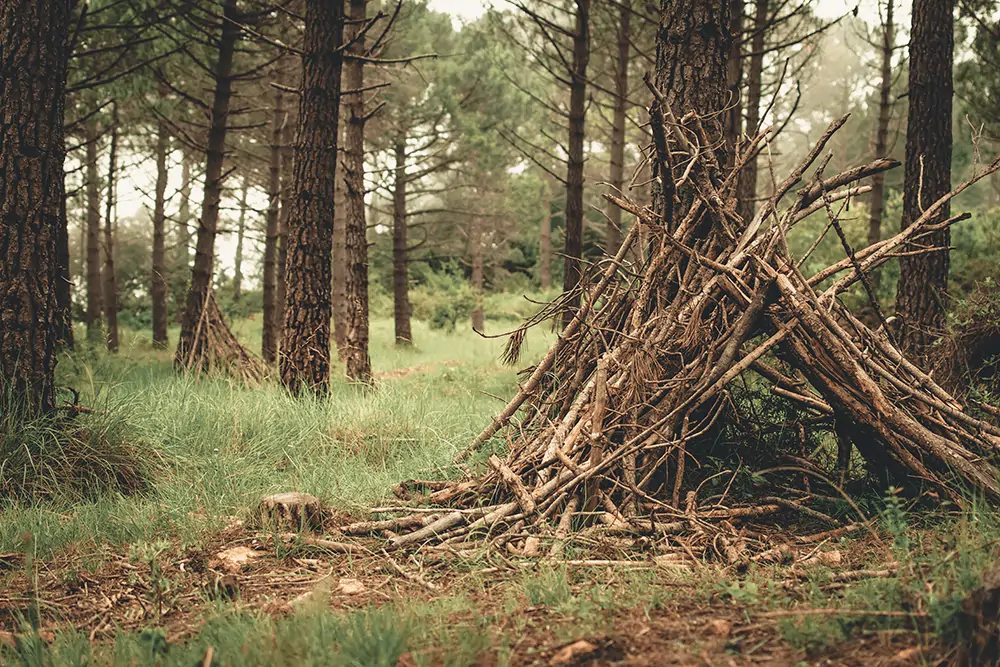
A top priority is building a shelter that can protect you from the elements, wild animals, insects, and other dangers. Locate a cliffside or a fallen tree near the water source.
It is best to build your shelter against a solid surface that can protect you from the wind and hide you from wild, predatory animals. Look around the forest for large branches and lean them against the rock or tree.
Make sure that the shelter you build is small but can accommodate your entire body if curled up because the smaller the shelter, the easier and quicker it will be for your body heat to warm it.
Fill any gaps between the larger branches with smaller branches. Then collect debris from the forest floor, such as dry leaves, pine needles, bark, moss, etc., and layer the floor of your shelter.
Use 3 to 4 layers, as this can help to provide insulation against the cold floor under you when you lie down in the shelter.
Make a Shade Shelter
If the weather is very hot, you must protect yourself from the heat. In this case, building a shade shelter is a good idea.
You can do this by digging a few inches of the soil to get to the cooler ground. Using some tree limbs or sticks, build a shelter over the ground.
Use leaves, bark, a blanket, or a sleeping bag to cover one side of the shelter. Lie on the cool soil under the shade to keep yourself cool.
Get Food
Bugs are a great source of nutrition and protein when surviving in the wild. Look for crickets, worms, grasshoppers, and beetles where there is damp earth or rotting logs. Before eating the bugs, remove any outer shells, crush them and cook them on fire.
Look for edible nuts such as acorns. You can eat the inner bark of all evergreen trees with needles such as spruce, fir, and pine. Look for eggs in bird’s nests in trees; if you can get any, you can cook and eat them.
You can create a sharp spear with a hardwood sapling or branch and use it to kill animals like squirrels, rabbits, fish, and frogs that you can roast over the fire and eat.
Build a Fire
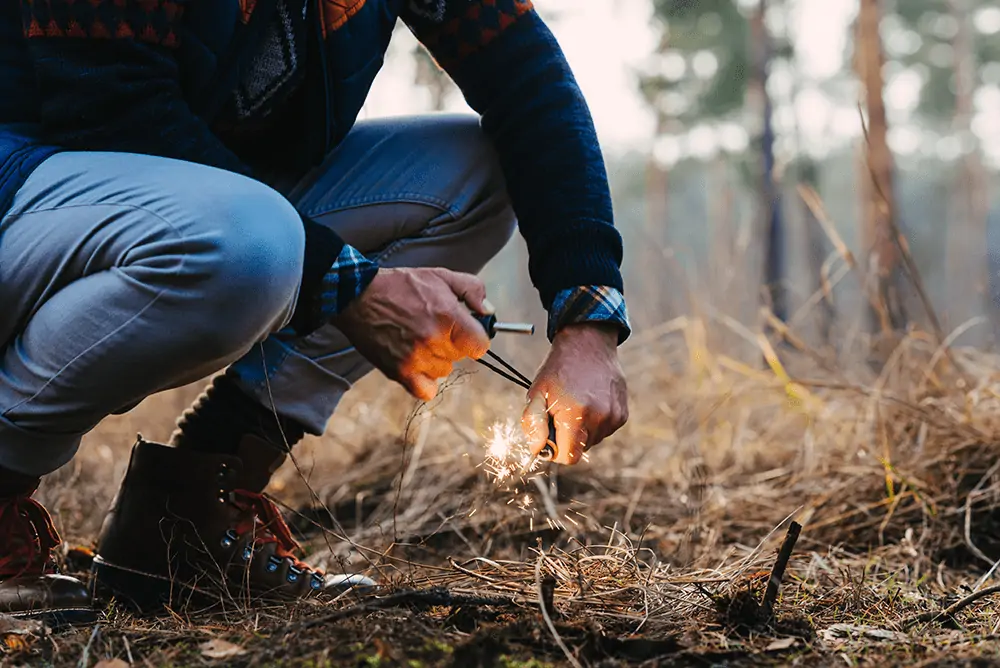
Gather dry leaves, pine needles, dry grass, or whatever dry foliage you can find around you to use as tinder. Gather dry sticks to use as kindling.
Use a larger piece of wood to block the wind and the tinder to create a nest. Ignite the tinder using a lighter, matchbox, a magnesium fire starter, or batteries, and spread the flame using long and steady breaths.
Once the smaller pieces catch, add larger pieces of wood to the fire.
Carry These Must-Have Essentials
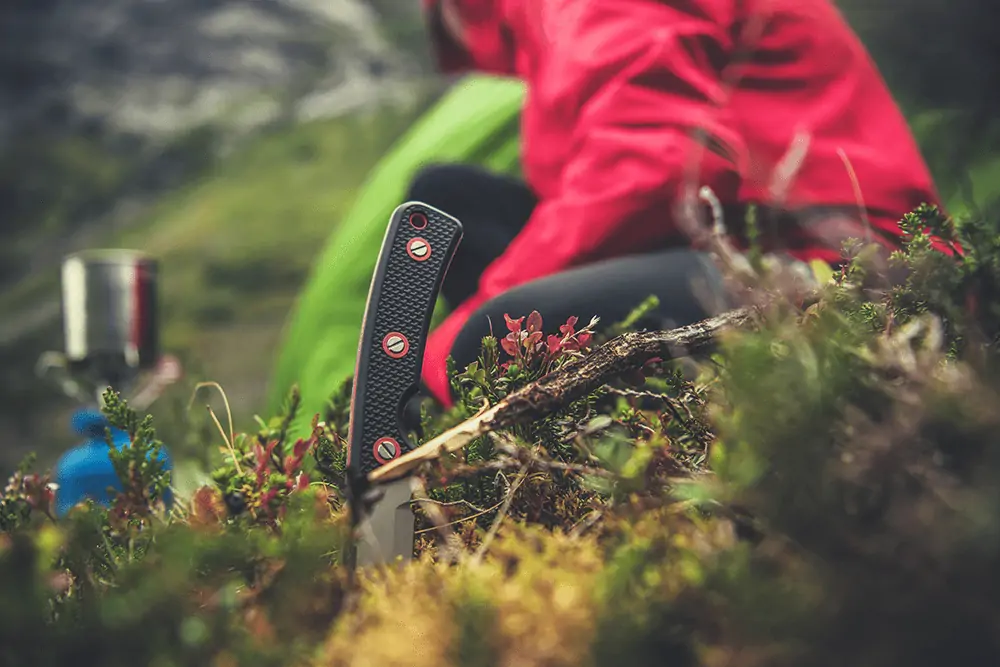
Whenever you’re setting out on an outdoor adventure, it is important to carry some basic essentials that can help you survive in case you get lost in the wilderness, such as:
- Waterproof kit
- A map and GPS communicator or compass
- Fire starters like lighters, matches, and magnesium fire starters
- Tarp and rope
- Extra batteries
Practice Your Survival Skills
The most important thing to survive in the wilderness is practice. Take time to practice various skills such as trying bowlines, striking a magnesium fire starter, making a spear, etc.
It may also be a good idea to take a first aid class to learn how to survive hypothermia, handle injuries, wrap broken bones, dress cuts, etc.
Final Thoughts
These tips and tricks you should master before setting out on an outdoor adventure will help you survive in case you are lost. Prevention is the best solution. If you’re a new hiker, familiarize yourself with your surrounding area on the trails and have the right tools in case things go south.
But the most important tip is to remain calm, strong, positive, and safe until help arrives.


